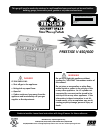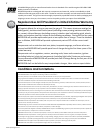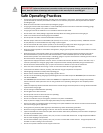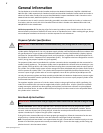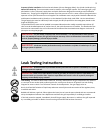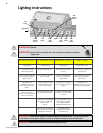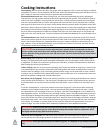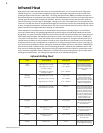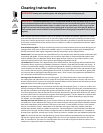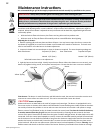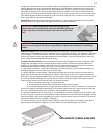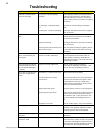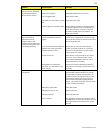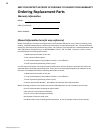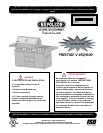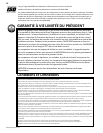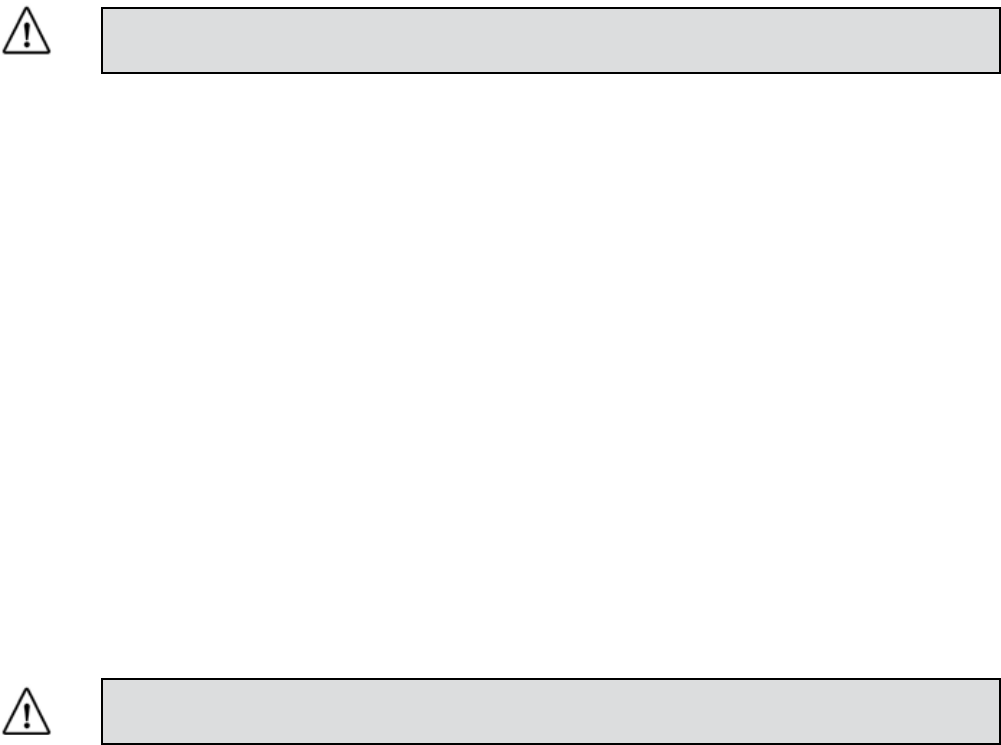
4
www.napoleongrills.com
Gas Hook-Up Instrucons
WARNING! A re will result if the gas supply hose makes contact with the underside of the grill or drip
pan.
Cylinder Connecon: Ensure the gas regulator hose is kink free. Remove the cap or plug from the cylinder
fuel valve. Insert the black QCC1 regulator nipple onto the QCC1 fuel valve. Hand ghten clockwise. Do not
use tools. Leak test all joints prior to using the grill. A leak test must be performed annually and each me a
cylinder is hooked up or if a part of the gas system is replaced.
If this grill is to be connected directly to a house propane gas supply line, follow the instrucons for the natu-
ral gas hook-up. Oponal side burners must also follow the natural gas hook-up instrucons.
Note: The propane tank heat shield is not required when the grill is connected to a xed fuel supply, as its sole
funcon is to shield the propane tank normally used with the grill. Ensure that the supply pressure being sup-
plied to the unit is 11inches water column.
General Informaon
This Gas Barbecue Is Cered Under Canadian And American Naonal Standards, CAN/CGA-1.6b-2002 and
ANSI Z21.58b - 2002 respecvely for Outdoor Gas Grills and should be installed to conform with local codes. In
absence of local codes, install to the current CAN/CGA-B149.1 Propane Installaon Code in Canada or to the
Naonal Fuel Gas Code, ANSI Z223.1/NFPA 54, in the United States.
If a rosserie motor is used, it must be electrically grounded in accordance with local codes or, in absence of
local codes, with the current CSA C22.1 Canadian Electrical Code in Canada or the Naonal Electrical Code,
ANSI/NFPA 70 in the United States.
California proposion 65: The burning of gas fuel creates by-products, some of which are on the list as sub-
stances known by the State of California to cause cancer or reproducve harm. When cooking with gas, always
ensure adequate venlaon to the unit, to minimize exposure to such substances.
Propane Cylinder Specicaons
WARNING! If these instrucons are not followed exactly, a re causing death or serious injury may
occur.
A dented or rusty cylinder may be hazardous and should be checked by your propane supplier. Never use a
cylinder with a damaged valve. Use only a propane supply cylinder constructed and marked in accordance with
the specicaons for LP-gas cylinders of the Naonal Standard of Canada, CAN/CSA-b339, Cylinders, Spheres
and Tubes for Transportaon of Dangerous Goods; and Commission, as applicable or the Specicaons for LP-
Gas Cylinders of the U.S. Department of Transportaon (D.O.T.). This appliance has been designed for use with
a 20 lb. (9.1 kg) size propane cylinder only (not supplied).
The propane cylinder must be provided with a cylinder connecon device compable with the connecon for
outdoor cooking appliances. The propane cylinder must be provided with a shut-o valve terminang in a pro-
pane cylinder valve type QCC1, and a safety relief device having direct communicaon with the vapor space of
the cylinder. The cylinder supply system must be arranged for vapor withdrawal and the cylinder shall include a
collar to protect the cylinder valve. The cylinder shall incorporate a listed OPD (overll protecon device). Do
not store a spare LP-gas cylinder under or near this appliance. Never ll the cylinder beyond 80 percent full.
Use only the pressure regulator and hose assembly provided with this barbecue. Replacement pressure regula-
tors and hose assemblies must be specied by the manufacturer. Do not store a spare propane cylinder on the
shelf beneath the barbecue.
The regulator supplies a pressure of 11 inches. water column to the gas grill and has a QCC1 type ng. Cyl-
inders to be used with this unit must be supplied with a QCC1 cylinder valve. A QCC1 cylinder has a posive
seang connecon, which will not allow gas ow unl a posive seal has been achieved. It is also equipped
with an excess ow device. In order to aain full ow to the grill, the valves must be in the o posion when
the cylinder valve is turned on.



